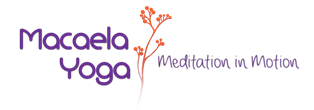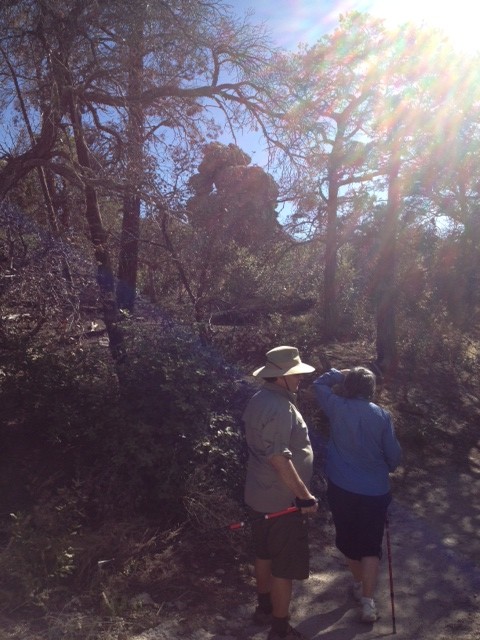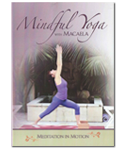New location August 13!
Canyon Vista Medical Center Medical Office Building 2 5700 S. Hwy 90, Sierra Vista Location is Medical Office Bldg, Rehab Gym, building on left side of new hospital bottom floor, first door on left.Hours of Operation
Thursdays: 6:30 - 7:30 p.m.
Individual consultations & lessons available upon request. Hope to see you there!
Mindful Yoga with Macaela DVD
-
Latest My Thoughts Blog
- Meditation Classes July 3, 2016
- Meditation and Depression May 8, 2016
Interesting Links
Category Archives: Uncategorized
Multiple Realities
Food for Thought
“If you think you are too small to make a difference, try sleeping in a room with a mosquito.”– African proverb
Stability and Movement
 Last night at yoga I was thinking about stability and movement. If I anchor myself in a position, I can stretch away from that point like a ball bouncing up from the ground. In this way, stability makes movement easier. Like most human beings, I find myself attracted to movement, which is fine, but sometimes I’m distracted by it, like a sparkly thing that has no purpose. I strive to find a quiet, still place inside myself to ground me. Then I can move from that centered space in a purposeful, balanced way into the whirling world—and not be knocked down by the speed of life.
Last night at yoga I was thinking about stability and movement. If I anchor myself in a position, I can stretch away from that point like a ball bouncing up from the ground. In this way, stability makes movement easier. Like most human beings, I find myself attracted to movement, which is fine, but sometimes I’m distracted by it, like a sparkly thing that has no purpose. I strive to find a quiet, still place inside myself to ground me. Then I can move from that centered space in a purposeful, balanced way into the whirling world—and not be knocked down by the speed of life.
Intention
At the workshop last week I talked about setting an intention for meditation. I meditate with others in mind, both specific people and the world at large, and with the intention of bringing forth my best self to the day. I ask myself what my purpose is for this quiet time and what I want to be–as opposed to what I want to be doing. Doing is our default setting. But we can make our actions be of worth when we determine what we are. I want to be a source of peace. I want to be compassion itself. I do not always find these goals easy. But that is when remembering my intention is most important.
Mantra Meditation
A mantra is an “instrument of thought,” a way of focusing the mind through sound and repetition. Mantras were originally practiced as part of the Vedic religion of ancient India, where the sound of the Sanskrit language was thought to have a mystical power, and chanting was an important religious ritual. These sounds can be prayers or a technique for meditation, making the mind more spacious by dwelling on them, whether the literal meaning is known or not. Today people use affirmations as mantras, or they may use just a single word such as “peace” or “joy”. Some use the sound Ohm (or Om) which is said to be the most powerful, since it includes all sounds, the supreme ultimate, the source of creation, and everything else. The six syllables “Om mani padme hum,” make up a mantra that especially appeals to me. The syllables are beautiful just as sounds, but knowing the meaning helps get even more out of their repetition. Each of the syllables is to focus us on a specific quality: generosity, ethics, patience, diligence, renunciation, and wisdom. It is wonderful to have tools to bring goodness to the forefront of my mind!
Healing Stress through Balance and Meditation Workshop
Saturday was the workshop on healing stress through balance and meditation. I felt so rich to have had the opportunity to share a very meaningful part of my life with this group of beautiful, open-minded people who are committed to a more peaceful path. We tasted a variety of meditation techniques, trying them out so people could find which one resonated best with them. One of the things we practiced was meditation on a rose. It was interesting to see how we all take a different approach to experience and perception. Some focused on the smell, others the delicate feeling of the flower, others the intricate petal patterns, and still others on the whole life cycle of the rose. It should have been a longer day. It was only two hours. I thought at first that two hours for a beginning meditation workshop might seem very long, but that wasn’t the case at all. Well, there will be more to come, and next time, I plan on covering less with more time for savoring and for questions.
Yoga and Prana, Life Energy
The life force (prana) within each of us fluctuates constantly. Acceptance of that makes the journey so much easier. Wherever I am each day, mentally, physically and spiritually, is always a gentle surprise. Better to leave expectations at the door. When I practice my asanas, although I have a plan, I take the perspective of “beginner’s mind.” I want to be open to how things are today.
I used to be obsessive. I couldn’t miss a practice. But as I have gotten older, I have learned so much–maybe even gotten a little wiser. Now, when I miss a day, it actually deepens my dedication and appreciation of how much yoga brings to my life. And sometimes, a practice can just be a few conscious breaths and a focus on presence.
Mindfulness Meditation
Meditation doesn’t need to be a complicated process. Many people think that if they can’t turn their thoughts off or sit still, they can’t meditate. But the definition of meditation doesn’t have to be narrow. It can be as simple as becoming more mindful, creating pauses throughout the day in order to be more fully alive. Try an active meditation. As you savor your senses, remember your breath. Give yourself little reminders to pay attention throughout the day. As you take your shower, be conscious of the sensuous feeling of the warm water and the smell of the soap, and take some conscious breaths. When you put on your clothes, feel the various textures of the fabrics and the leather of your shoes. Don’t rush. Take a few breaths. When you stop at a red light, be grateful for the privilege of owning a car (or bike or motorcycle). Listen—whether you hear music, cars, or the wind. Take some conscious breaths. When you sit down at the computer, desk, or table, notice the way you sit. Take some conscious breaths. As you begin to eat your food, slow down to taste. Breathe between bites. Notice the muscle in your shoulders periodically. Sooth them with some slow, conscious breaths as you soften the muscles with each exhalation. That is it! You are practicing mindfulness.
The Journey
How you approach your practice, your poses, is more important by far than how you look. Practice is a process, not an achievement. Be patient. Practice with honesty and gentleness towards yourself. Go into and out of each pose thoughtfully. Pay attention. Be there for yourself so you can experience the journey with your whole heart.





